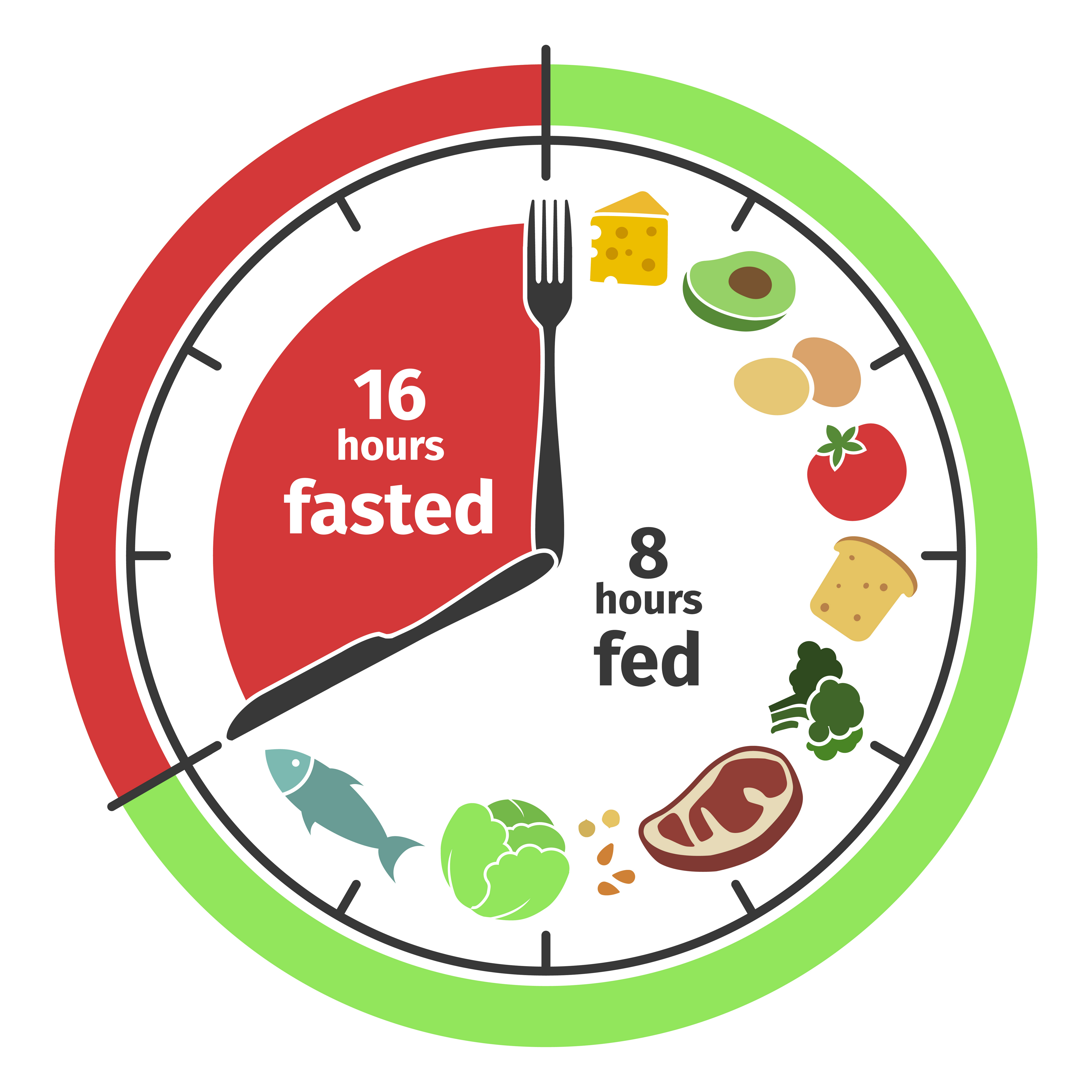
Just like the keto diet, you’ve probably heard of intermittent fasting (IF). I’ve seen quite a few posts about IF in the Atkins Community, and numerous celebrities swear by it.
IF means you cycle between periods of fasting and eating. The premise behind IF is that it lowers your insulin levels so your body starts to release stored sugar and burn it as fat. There is some preliminary research from a very small study of prediabetic men that suggests IF may improve your body’s ability to control blood sugar. Although the men in this study did not follow a specific nutrition protocol, and they were able to eat whatever they wanted during the six hours they weren’t fasting, it also meant “dinner time” was at 3 p.m. My take is that if you’re on a low carb or keto diet, IF is not necessary, since you are keto-adapted and you have already trained your body to burn fat for fuel and naturally control your blood sugar levels.
These are the most popular methods of IF:
- The 16/8 method: This is also called the Leangains Method, and it involves skipping breakfast and restricting your daily eating period to 8 hours, such as from 1 p.m. to 9 p.m. Then you fast for 16 hours in between.
- Eat-Stop-Eat: This involves fasting for 24 hours, once or twice a week. For example, by not eating from dinner one day until dinner the next day.
- The 5:2 diet: With this method, you consume only 500 to 600 calories on two non-consecutive days of the week, but you eat normally the other five days.
For many people, keto and IF go hand-in-hand, and while I believe Atkins may be the better keto diet, there is also a way to do IF that can complement your low carb or keto lifestyle.
As long as you are meeting your caloric requirements during the day (chronically consuming too few calories has the potential to slow down your metabolism), I suggest eating nothing after dinner and doing a 12- to 14-hour fast every night to give your digestion a break. And truth be told, nighttime eating is also associated with a higher risk of obesity and diabetes; sometimes it’s too tempting to Netflix and snack all evening long. Make 7pm or 8pm your calorie cut-off, and then wait to consume your first meal of the day 12 or 14 hours later. And here’s another way you can benefit from my IF strategy: Doing a morning workout in a fasted state helps to access your fat stores and puts you in the fat-burning zone.
If you are curious to try IF, try this method and see if it works for you. Feel free to comment or post in the Atkins Community and let me know how it goes!